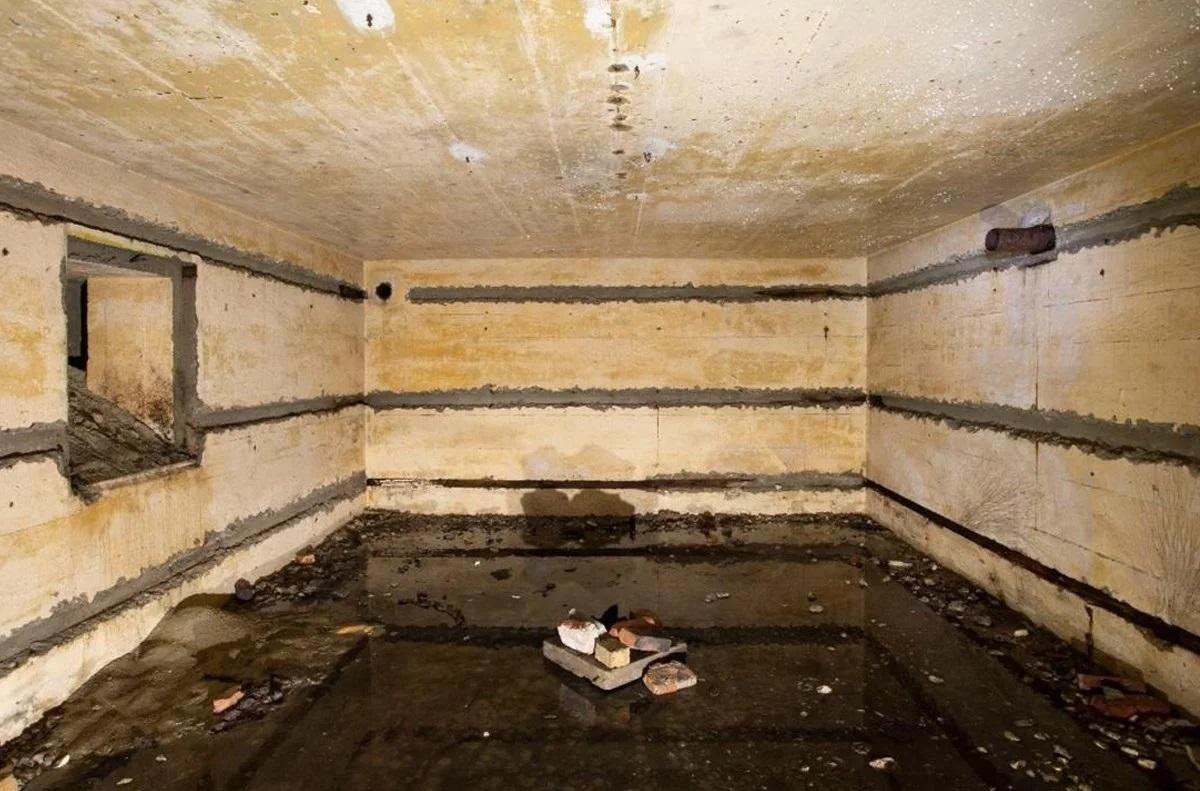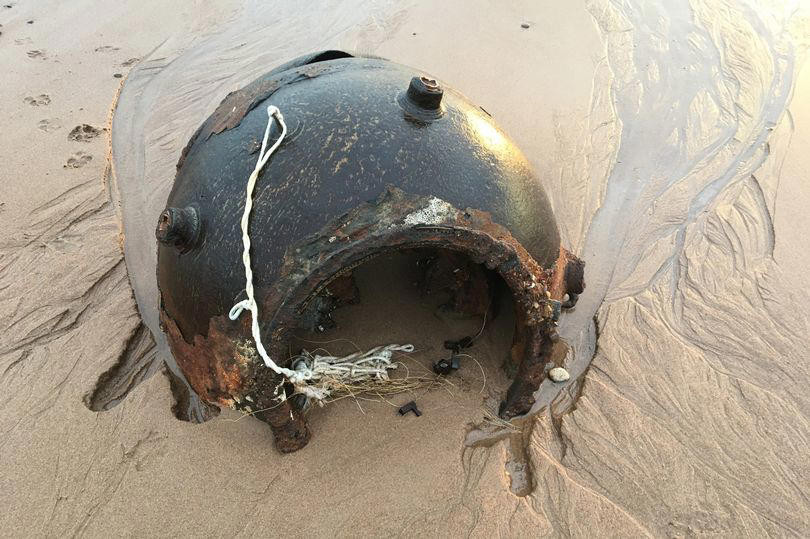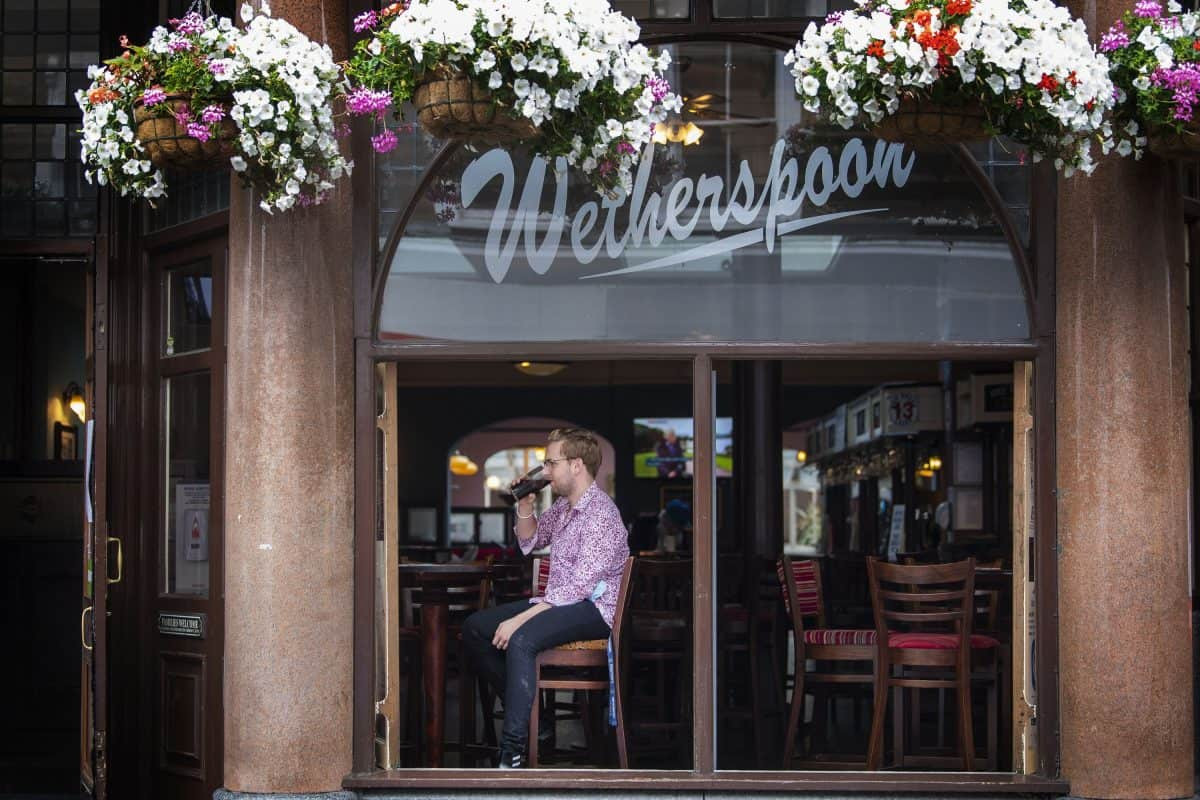A couple were shocked to find a second World War bunker under their summerhouse three years after they moved in.
Catherine Milburn, 32, and husband Liam, 34, made the discovery while they were renovating their back garden.
There are only believed to be 14 of them left in the UK.
The couple have lived in their three-bed, semi-detached house in Southwick, near Trowbridge, Wilts, with two children, Noah, seven, and Florence, four, for over four years.
They had no idea they had a bunker in their garden until they found it on Sunday.
Mrs Milburn, a regional manager, said: 'There's about a three-metre-long piece of concrete underneath a summerhouse in the garden.
'When we were digging it out, we noticed steel bars.
'We thought it was a bit over the top for a summerhouse then we got to a corrugated iron sheet.
'I thought 'Oh my God, what have we found? We kept digging. We were so excited. Liam and I kept going until we ran out of daylight. Then we found the steps. It's got water in it so we're going to pump it out.'
Since the discovery, the family have now ditched their plans to build a garden room where the summerhouse stood as they want to preserve the shelter.
The mother said: 'It's lovely to have that history in our back garden.
'We love the idea of making use of it and we want to do something different.
'We want to get some light in there. I'll definitely document it as we go. The kids are really excited and the school want to do a trip here. It's so educational for them to learn about the history.'
A Piece of History Discovered
Catherine and Liam said they fell in love with the house because it was 'full of character' and was once the village's post office.
The mother said: 'We assumed there had been an overground bunker there because when we moved in there were lots of bricks in the garden.
'We renovated around 60 per cent of the garden but we hadn't found a thing, not one piece of history in the house.
'We were desperate to find something.'
The Anderson Shelter: A Symbol of Resilience
An Anderson shelter was a small, metal air raid shelter built in gardens and houses during the war to protect people from bombs.
They were made out of two curved corrugated steel sheets bolted together at the top, and buried about three feet into the ground.
Designed to protect up to six people from shell fragments and bomber splinters, they are capable of withstanding a 100-pound bomb falling six feet away.
The government supplied them to low-income families for free, and later sold them to wealthier people.
Around 1.5million were distributed before the war, and 3.6million were produced in total.
A Shelter For Everyone
They became popular after heavy bombing began in the summer of 1940. During the Blitz, it was common to use them every night.
They were named after Sir John Anderson, the Home Secretary from 1939 to 1940.
A Rare Find
The Milburns' discovery is a reminder of the resilience and determination of the British people during World War II. Anderson shelters, while no longer in use, stand as a testament to a time when the nation faced adversity. The discovery of this rare and well-preserved example in Wiltshire is a valuable piece of history that will be treasured by the family for generations to come.


















